The largest Buddhist temple in Busan, Beomeosa feels both homey and solemn, if such a thing is possible. Enter through the storied gates and become aware of the temple’s 1,300 year history.
The temple was first founded in 678 A.D. by Master Ui Sang during the reign of King Munmu (Silla Dynasty). It sits on the slope of Geumjeongsan, the southern end of the Taebaek mountain range. In the midst of a Japanese invasion, King Munmu sent Master Ui Sang to chant for seven days, then start a temple on Geumjeongsan. Legend holds that the earth opened up, and all the Buddhas and Bodhisattvas appeared to drive away the Japanese. Those Buddhas and Bodhisattvas were nowhere to be found during the Hideyoshi invasion in 1592, but the temple was reconstructed and renovated in the following years. Over the centuries there have been other major renovations, but some of the temple’s pagodas and lamps date back a thousand years.
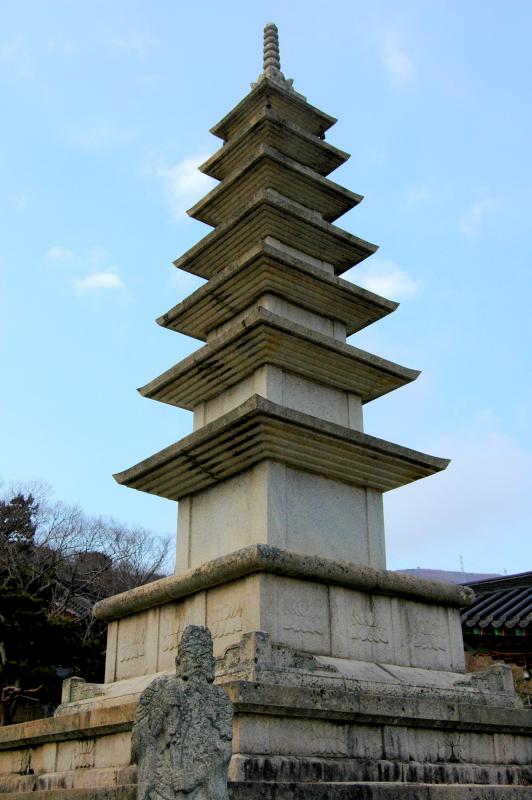
Right next to the Seongbo Museum is this seven-story tall pagoda – no name or history is given, but a sari of the Buddha is supposedly enshrined here.
One of the Four Heavenly Kings guarding the aforementioned pagoda.
While undated, the floor tiles were both detailed and plentiful near one of the lecture halls.
One of the oldest structures in the temple, the three-story pagoda was built in the 9th century – still looking pretty good, considering how old it is.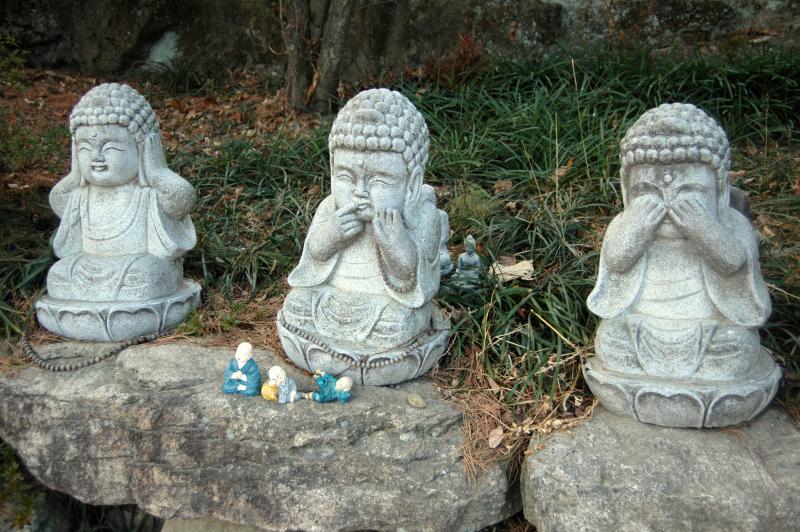
A slightly newer addition to the temple – personally I think the monkeys are funnier.
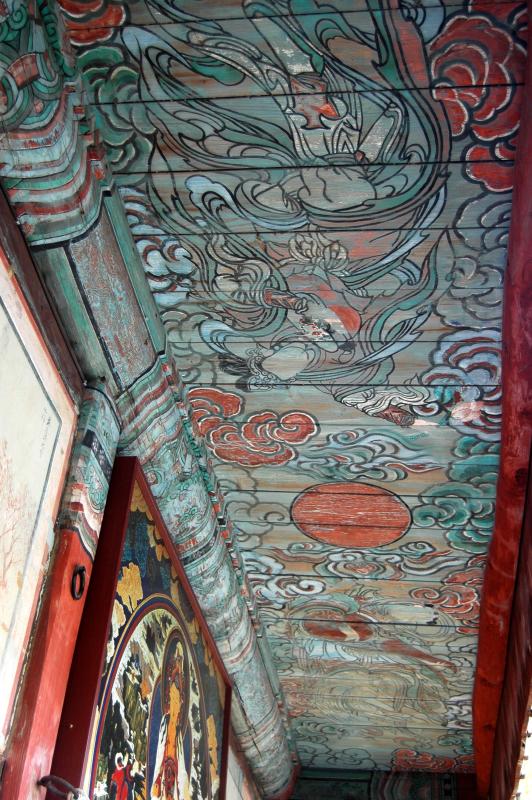
The artistry of Daeungjeon’s canopy is wonderful – we didn’t see inside the main shrine itself, but this almost made up for it.
A somewhat different color scheme found amidst a building that combined three shrines. This unique shrine, reconstructed in 1905, was built by priest Hakam to honor Sakyamuni Buddha , NaBanJonJa (see next picture) and sixteen disciples of Buddha. 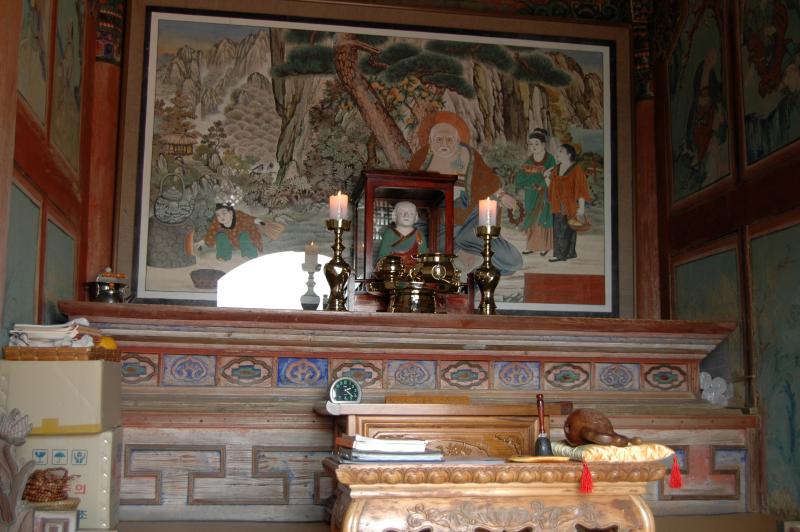
The center of those three halls is Dokseong Hall, honoring NaBanJonJa – a person who reached enlightenment by himself.
To the right is 나한전, (Na-han jeon, or Nahan Shrine), originally constructed in 1613 to honor sixteen disciples of Buddha. They were previously called Na-Chal, meaning ‘harmful to people’. After the Buddha got ahold of him, they become Buddha’s followers. The sixteen statues line the walls on either side of the above statues.

A plethora of lanterns, hanging year-round.
The only sour note was some construction that was going on; it may not affect your trip, of course. With plenty of signage and sights to see, it’s an excellent destination if you’re headed to Busan. The Lady in Red and I will almost certainly head back in the spring time for a glimpse of a nearby Wisteria habitat – plenty of gnarly-looking trees that have curled around each other…
Ratings (out of 5 taeguks): How do I rate destinations?
Ease to arrive:
Worth the visit:
Directions to Beomeosa: Take line 1 of the Busan subway system to the Beomeosa subway station. Take exit 5 or 7 to street level, then take an immediate U-turn. Turn down the road in-between two subway exits, then walk uphill this one-way road for 100 meters. Be aware that you’ll be walking the wrong way up this road. At the fork, get on bus 90 and ride that up the three kilometers to the temple’s entrance. Free admission, hours not specified. For more information, go to beomeo.kr.
This post was originally published on my blog,Chris in South Korea. If you are reading this on another website and there is no linkback or credit given, you are reading an UNAUTHORIZED FEED.
Share on Facebook


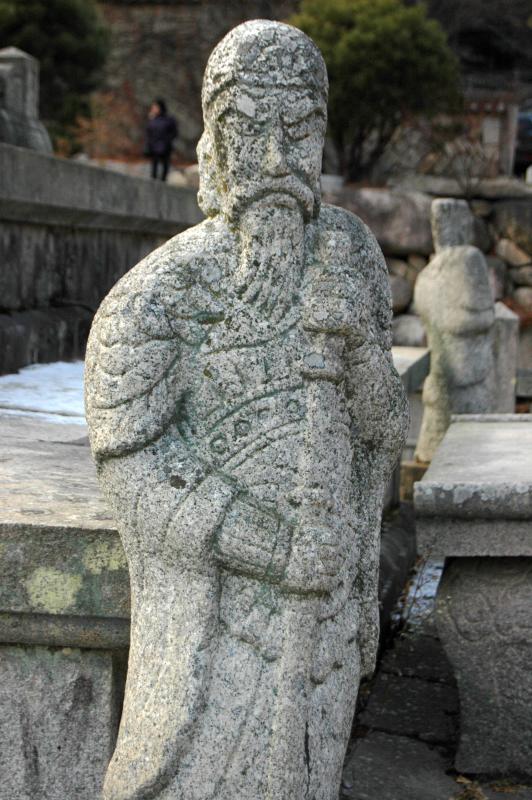


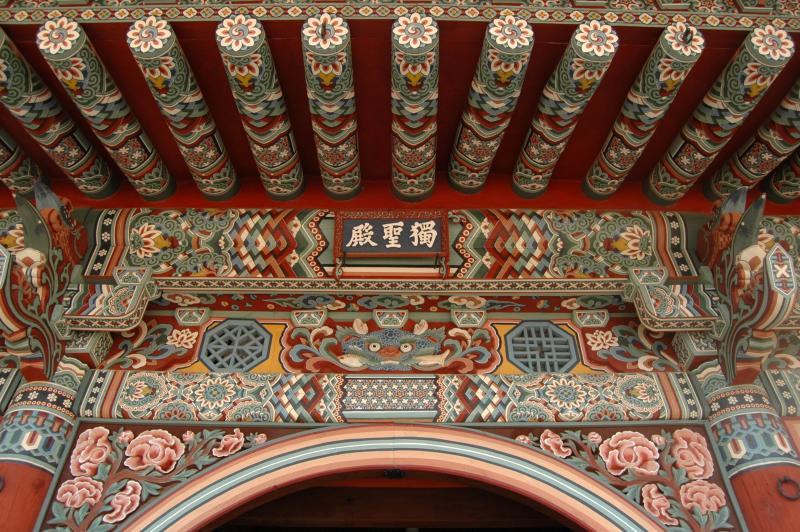





 RSS Feed
RSS Feed
Recent comments